Navigation auf uzh.ch
Navigation auf uzh.ch
Earlier in 2024, the BBC mini-series «The Way» was broadcast. In the series, rumors of the imminent demise of the Port Talbot steelworks cause a riot to break out, first in the town and then across the country, and the world comes apart at the seams. In early 2024, this fictional plot of a TV series seemed to become reality, almost simultaneous to its broadcast – as Tata Steel announced the actual closure of the blast furnaces in the works. Our visit in Port Talbot, which took place just after these events, was thus situated in an intermediary space between the conventionally “real”, the fictional and all sorts of myths.
.jpeg)
Figure 1: Tata Steel, Port Talbot. Photo by Viktor Macha.
“The Way” is the television directing debut of actor Michael Sheen, known among other things for his roles as Tony Blair, and is set for long stretches in Sheen's hometown of Port Talbot in Wales, the site of one of the last two blast furnaces in the UK. In this three-episode BBC production, rumors of the imminent demise of the steelworks cause a riot to break out, first in the town and then across the country, and the world comes apart at the seams. The script was written by James Graham (Sherwood); Adam Curtis appears as the third head of the project, probably the most intellectually distinguished one, and, like the other two, is listed as executive producer. “The Way” breaks down the major themes of Curtis's film essays into fictional (mini) series TV: the constitutive significance of manipulative psychotechniques for contemporary forms of subjectivity, the collective historical disorientation that characterizes the neoliberal era and its aftermaths, as well as the apparent impossibility of imagining better ‘futures’.
During the excursion, especially during our stay in Port Talbot, we found ourselves in a kind of intermediate space – a space in which different levels of reality became confused, for us, but also for others: “The Way” as a (local) media event of supra-regional artistic significance, the events surrounding a steelworks, the political-economic reality of post-Brexit Great Britain, and probably our own professionally-deformed perception schemes, the interest in collective narratives and in the pop culture of deindustrialization.
In “The Way”, Sheen, Graham and Curtis tell of crises, of a reality that has become brittle and of the disorientations of the present. What a film is in such a situation and what it does, what it triggers, what purposes it serves – such questions posed themselves in an unexpectedly stark and direct way. As a pop culture researcher and urban ethnographer who searches for socio-political constellations of the present in such fields, I felt that this also provided a new understanding of the diagnostic aspect of the filmmakers' work and of some of Curtis's themes. It had never been so condensed for me before. Of course, “we were there, so we understood” is not an unencumbered gesture: the credibility and authority of ethnographic writing, James Clifford said a few decades ago (whether critically or affirmatively remained somewhat open), is based above all on an affirmation of testimony and authority: I was really there – you can believe me, you must believe me. In awarness of the general dubiousness of this claim, but also with a certain enthusiasm in view of these experiences of presence, the following will be about “The Way” and Port Talbot.
Shortly after the trailer for “The Way” was released in March this year, Tata Steelworks spokesman in Port Talbot, Martin Brunnock, wrote an email to his plant-wide mailing list about the upcoming broadcast. “It was Oscar Wilde who is quoted as saying ‘Life imitates Art far more than Art imitates Life', the email begins. “Now far be it for me to challenge one of history's literary greats, but I'm not so sure.” An employee forwarded the email to a colleague of ours – and we were amazed at how literary the communication in Welsh steelworks is.
The company had announced the closure of significant parts of the steelworks shortly before the series trailer was released, in January 2024. The decision will cost thousands of jobs – in an economically desolate region that has been shaken by deindustrialization for decades. Local hero Sheen's multi-part film, in the making of which many steelworkers were involved as extras, seemed to anticipate this, or, at the time of broadcast, to comment on it live.
In light of this coincidence, the Tata spokesperson comments in his email on the relationship between art and reality in general, makes a detour – for the sake of clarity – to the question of the ‘reality’ content of another series, one that has already been broadcast, namely “The Crown” (which, according to Brunnock, does contain ‘real’ elements but is also questionable in many respects), and then goes on to talk about the situation in the plant itself. In short: no one should confuse “The Way” with reality. Or, to paraphrase Oscar Wilde: Life does not, and more importantly: life should not imitate art. In this case. We should remain aware of the difference between reality and fiction when we get to see the mini-series in a few days' time; imitations that go in the wrong direction are a danger. The central concern of the Tata spokesperson was obviously that no one should start a riot: it would be fatal if the escalation that takes place in the movie turned out to be not only a fictional plot, but also a prophecy. The email is intended a sort of immunization against this. As if to make sure the message gets through, it switches from literary theory to popular media criticism: “For TV program makers it's all about attracting viewers; for newspapers, readers. What is it they say, 'Don't let the truth get in the way of a good story'?”
A few weeks after this email was sent out, we are sitting in the Wetherspoon pub in the center of Port Talbot, wondering to what extent the immunization attempt has worked. Jason Wyatt, a worker at the steelworks and representative of Unite the Union, explains the situation. A week ago, the coking plant was closed and several hundred people lost their jobs. The two blast furnaces are due to close in the fall, costing another 3,000 jobs. Instead, a new furnace is to be built with high subsidies, a so-called electric arc furnace that recycles metal. All in the name of “green steel”. Soon there will be no more blast furnaces on the island; in the 1960s there were still dozens. Meanwhile, Tata is building new ones in Holland and India and limits decarbonization to Europe for now. Unite the Union has developed an alternative plan for Port Talbot and is proud that it is also supported by Greenpeace, but it is unlikely to be implemented.
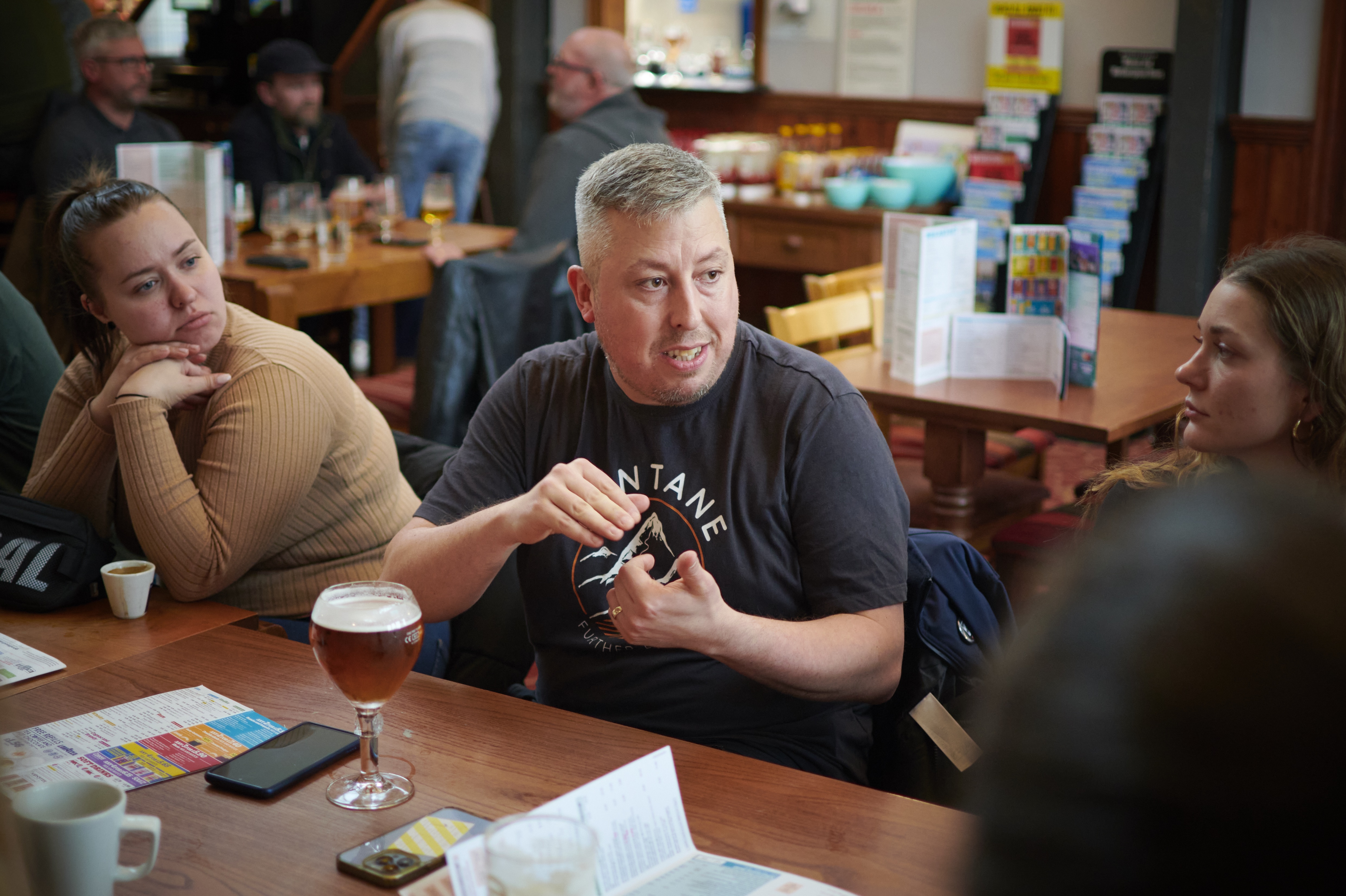
We are also talking about the fortieth anniversary of the Miners' Strike of 1984/85, which took place mainly here in Wales and the north of England (James Graham's mini-series Sherwood from 2022 is about the aftermath). Museum stores in the region sell coffee mugs and fridge magnets commemorating this epochal defeat of British trade unions and the British working class as a whole. LGBTQ flags can also be seen on some of these souvenirs - in memory of the solidarity of groups such as Lesbians and Gays Support the Miners and, of course, the film “Pride” (Matthew Warchus, 2014).
There are still protests in Port Talbot today, says Wyatt, as the closure plans are not just a threat to the factory, but to the whole region, the whole community. We have seen some short films of such protest rallies and strike actions on the union's YouTube channel. If you put pictures of these demonstrations next to the screenshots of the demo scenes in “The Way”, at least before the start of the fictional uprising, they are almost indistinguishable. Slogans like “Save Our Steel” can be found here and there.
However, according to Wyatt, the protests have so far remained muted. Most people are just looking out for themselves. A rebellious spirit is typical of Wales, he continues. At least, people talk a lot about it. But the times are more individualistic. “Have you seen 'The Way'?” He thought the series was great and sees the makers as something like allies.
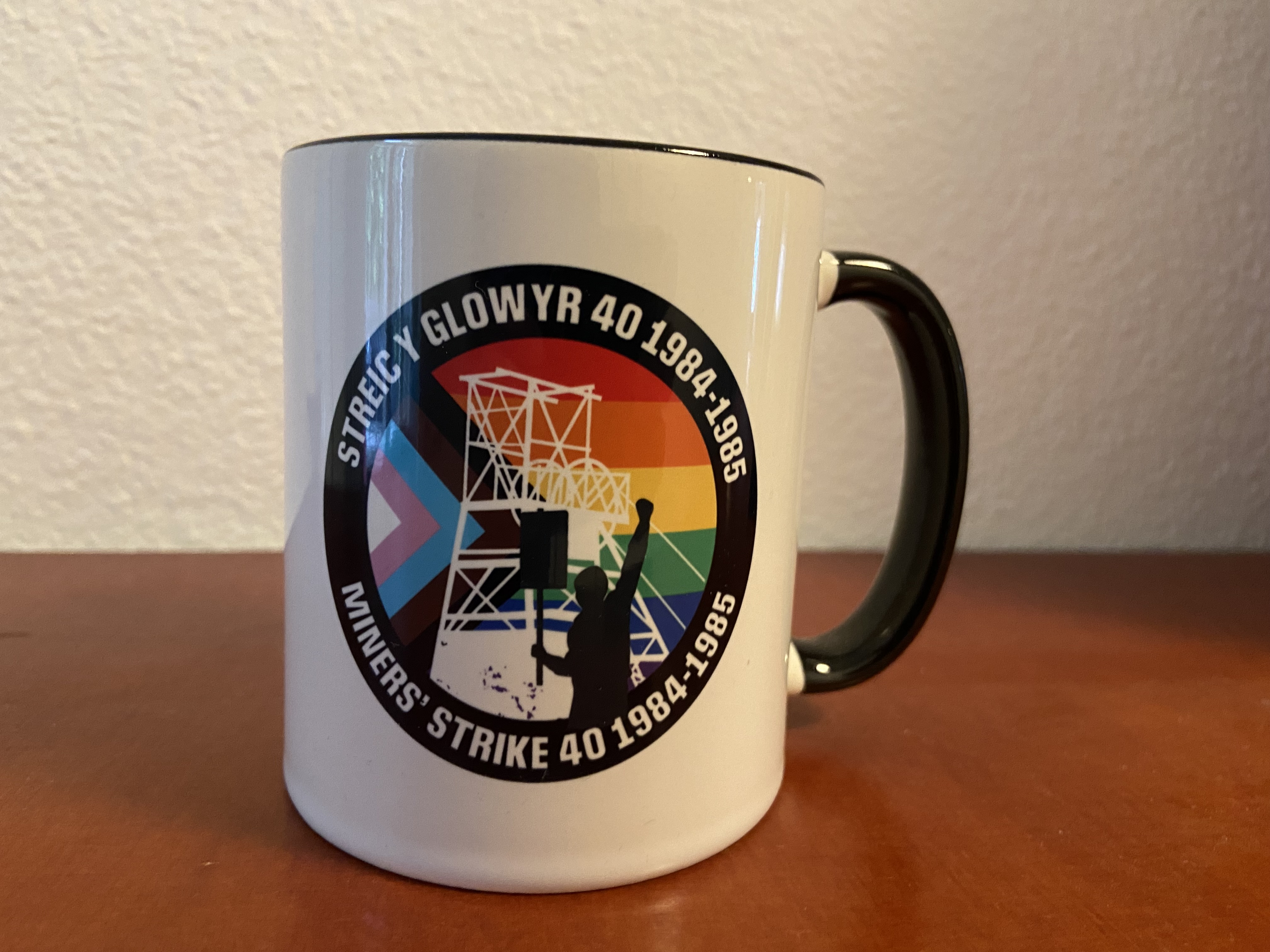
On the same day, a former manager takes us on a long drive through the gigantic, almost deserted steelworks – currently the largest producer of CO2 in the UK – and explains the production process and work steps. During the tour, we wear the fire-retardant blue protective clothing with neon bands that we are familiar with from “The Way”, and have been given a detailed safety briefing. What was planned as a tour of a contemporary industrial giant has become salvage ethnography, so to speak: The interest of the traveling cultural studies analysts in the object goes hand in hand with its demise.
The minibus drives – somewhere between the coking plant and the kilometer-long hall where the steel slabs are rolled and processed – past a historic fragment of wall, a few meters wide and a few meters high, positioned on a small grassy island, protected by metal poles. A surprising sight in this environment. A Welsh archaeologist traveling with us inquires whether this is really “the” wall: the remains of a medieval monastery complex, around 800 years old. There are all sorts of legends and myths associated with it in the area, she explains – if the wall collapses, Port Talbot itself is said to be destroyed. “It's also in ‘The Way’ – have you seen that?”

In “The Way”, not only do demonstrations take place in Port Talbot, but riots break out. There had been ominous signs: A careless truck driver causes the wall of the Abbey to collapse; the pilot light of the industrial plant goes out; a monk in a blood-red habit keeps turning up. A fatal accident occurs at the plant, the father of the victim, himself a steelworker, sets himself on fire in the main street of the town. Rumors of the imminent closure of the steelworks fuel the residents' spirit of resistance and attract groups willing to protest and use violence, from neo-Nazis to Antifa and climate activists, but also many wearers of Guy Fawkes masks whose political orientation remains unclear. Defeatist trade unionist Geoff Driscoll (Steffan Rhodri) tries to avert the coming uprising by making concessions to management and “better communication”, while his estranged wife Dee (Mali Harries) becomes a social media star with inflammatory speeches. Their unemployed and disoriented son Owen (Callum Scott Howells) consumes large quantities of therapeutic drugs and flirts with Anna (Maja Laskowska), a Polish immigrant who finances her studies by waiting tables, while his sister Thea (Sophie Melville) is torn between the two camps as a policewoman. At her son Rhys' birthday party, the little ones run around wearing Donald Trump, Boris Johnson, Tony Blair or Margaret Thatcher masks – something went wrong with the order, we learn. The Thatcher mask is immediately banished from the house by the grandmother and sails telegenically through the air. “The Way” obviously has no issues with using straightforward symbolism.
The plot escalates quickly: the British government deploys a private militia with special rights, imposes a lockdown, builds mobile detention camps, implements surveillance measures and shuts down the internet throughout Wales. The country is occupied – and the family, who have been turned into scapegoats by the authoritarian state via deep fake videos, try to cross the English border and eventually reach continental Europe with the help of smugglers. The island has gone mad, Britons – at least Welsh Britons – have become refugees in rubber dinghies who want to “get to Europe”.
Figures 5-13: Stills from "The Way". Photos by BBC.
In narrative terms, the mini-series is structured as a conventional family drama – the three generations of the Driscoll family overcome their mutual alienation while on the run. Geoff in particular, the weak patriarch, suffers from severe trauma. His own father (the ghost, the fourth generation so to speak, played by Michael Sheen himself) was a leader in the Miners' Strike, constantly pushing for escalation, but eventually committed suicide instead of dealing with the consequences of failure and his own responsibility for it. Geoff feels abandoned by his father, and rationalizes his own conformism, and occasionally his betrayal of his colleagues, with his pain. He is trapped in repetitive loops. But other, older layers of time – or at least imaginings of them – also shape his reality: when the uprising breaks out, he takes an antique Welsh sword from the factory museum, which probably comes from the old monastery, as a talisman and as a weapon. You never know what it may be good for.
The generational allegory – in the sense of Stuart Hall’s idea of a Conjunctural Analysis, if you want to go that far – is obvious: the defiant radicalism of the 1970s/80s and the defeats and upheavals of the Thatcher era were followed by the New Labour generation with its post-political orientation towards compromise and its adaptation to neoliberal conditions. But this generation has also grown old by now. Thanks to the passing on of trauma within the family and the decline of industry, it is followed in the present, at least in the male line, by a fall into drugs, psychosis and self-pity – but perhaps also the potential for a new rebellion? But in what direction would such a rebellion go?
Meanwhile, the women, especially the pragmatic policewoman Thea and Anna, the Polish migrant, keep things running. Sociological studies on the consequences of deindustrialization on gender relations in Wales tell similar stories, for example Valerie Walkerdine and Luis Jimenez's monograph on another (former) steel town in the area (Gender, Work and Community After Deindustrialization. A Psychosocial Approach to Affect, 2012).
“The Way” wants to tell a lot and pursues an ambitious social and contemporary diagnostic program – and it does so in a likably unsubtle way. Accompanied by haunting synthetic sounds like in 80s horror films (or vaporwave internet aesthetics; “foreboding sounds”, says the audio transcription again and again), the visuals are largely dominated by the usual quasi-naturalism of TV series. In addition, the visual track is characterized by surveillance camera feeds, television footage and private videos from the 1980s, dream and noise sequences, social media livestreams, emoji cascades and so on. In other words: at the beginning of “The Way”, we may be in Port Talbot, but the makers also make it clear that we are maneuvering through a brittle, fragile reality.
First of all, the subjectivity of some of the protagonists and their perception is brittle: in “The Way”, the genre-typical assertion of realism is overlaid (in a well-tested way) by digital audiovisual media culture, by its visual worlds and dynamics of affect, but also by the spectacle of the power of the state and corporations with their helicopters, weapons, cameras and algorithms, by automatically recorded video sequences, and not least by the effects of medication and drugs. Above all, however, it is memories and, one must use the word, traumas, individual and collective, that cause the protagonists’ loss of reality.
Not only Geoff and Owen, but everyone involved lives in an unreal present; the world of ‘traditional’ Welsh myths (the wall, the red monk, the sword, the “passing on of the fire” and a sunken bell) interferes in it, for one. Occasionally this tips over into magical realism mode (a talking teddy bear, the “Yellow Brick Road” from the Wizard of Oz). Above all, however, reality crumbles in political and historical terms.
The ‘visual programme’ of a reality that has become brittle thus stands for a historical conjuncture in which the world is not only mediatized through and through, but in which the memories and stories of the lost battles of the past overlay the present until it dissolves. As for the future – the characters cannot imagine a better one, nor can they imagine a path to it, but at best a re-enactment of old, folklorized rebellions. This description of the problem faced by all of us links “The Way” with conjunctural diagnoses such as those by Mark Fisher (Capitalist Realism etc.), Jeremy Gilbert (Hegemony Now, “The Long 90s”) or Simon Reynolds (Retromania), which were popular on the British left in the last decade.
In the fictional world of the series, the British government shuts down the internet. In doing so, it sets in motion a process in which an artificial intelligence takes over the television programme and shows people the images they really want to see. They are all images of idealized pasts. “I want things back the way things were” – that, at least, is something we can agree on, even if the nostalgic desire applies to different scenarios. The dominant class, English affluent citizens, Welsh rebels – all are, above all, nostalgic. They fail in truly orienting themselves in the present, in understanding this present as a moment in a potentially open history.
“The old world is dying, and the new world struggles to be born. Now is the time of monsters”, reads the meme-ified Antonio Gramsci quote, which the makers of ‘The Way’ are probably also familiar with. In recent years, many observers have found that Gramsci's ominous statements about Italian fascism from the 1930s fit very well into our time, into what may well be a post-neoliberal interregnum with its authoritarianism and voluntarist attempts at rebellion. In fact, however, Gramsci had written that it was a time of morbid symptoms, not of “monsters”. Slavoj Zizek is said to be responsible for the popularization of this lyrical (mis)translation. The apocryphal character of the quotation, however, also fits in with the basic theme of historical disorientation.
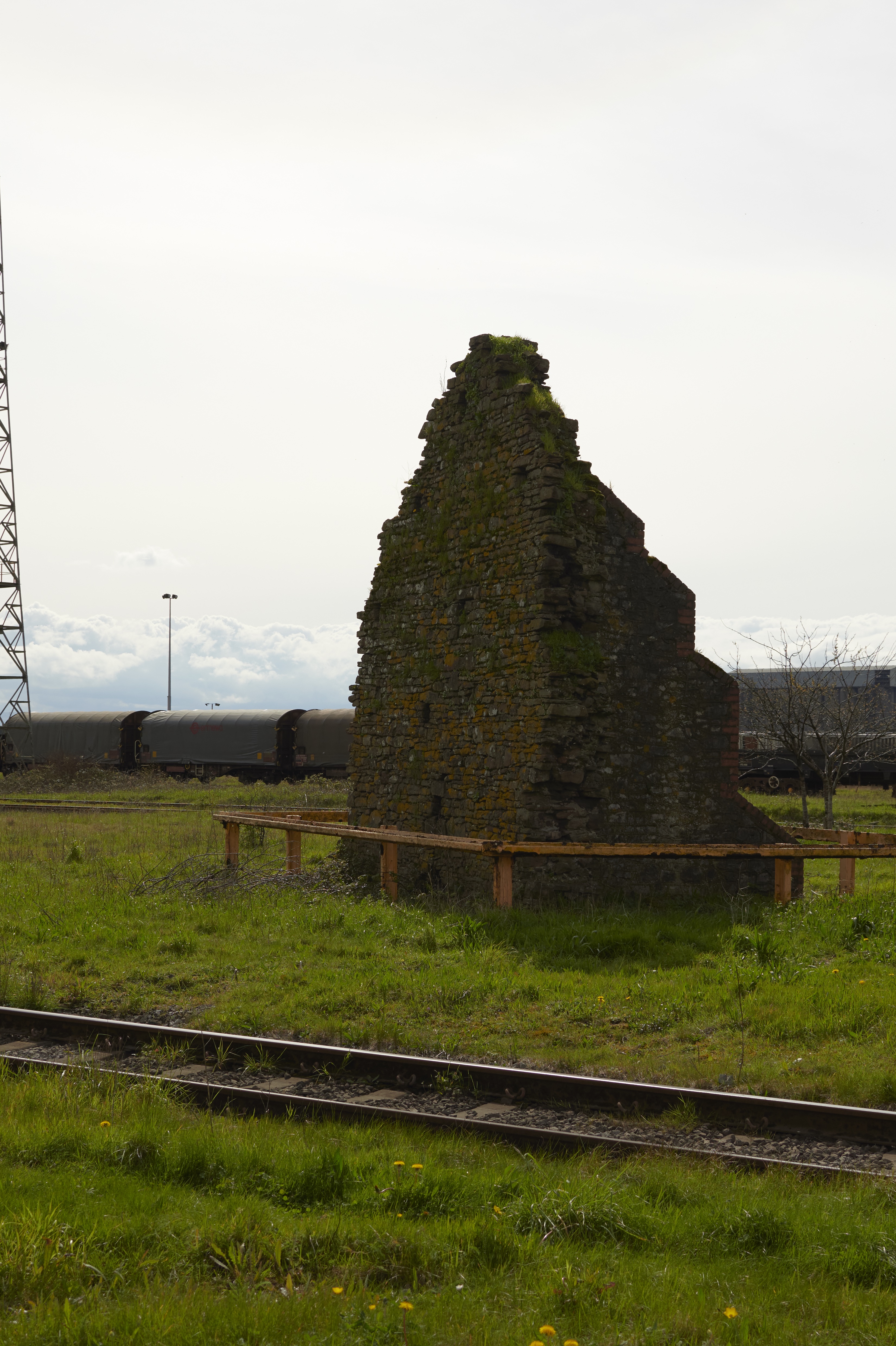
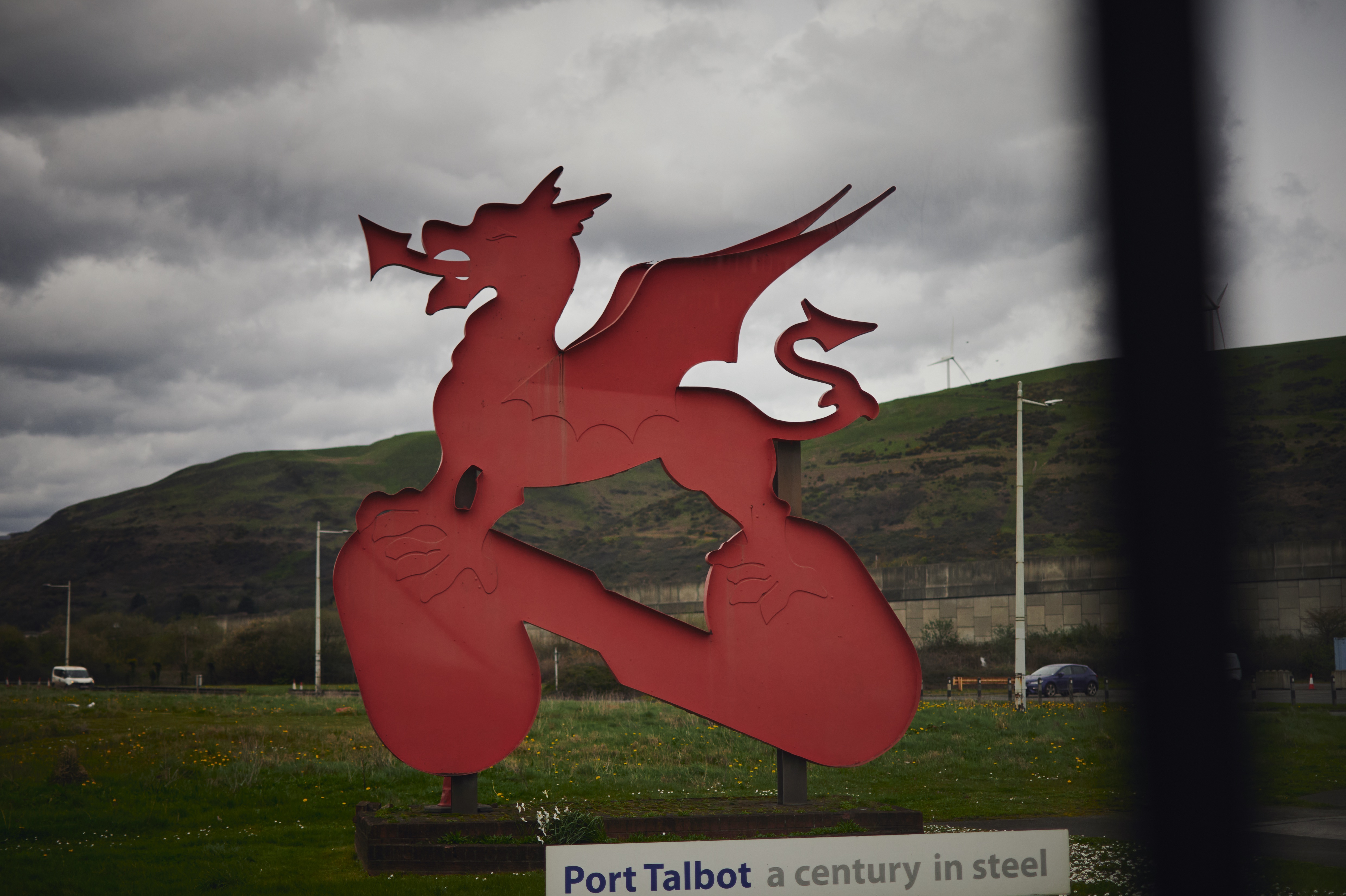
The Tata spokesman had warned in his email that television was only interested in audience numbers - the makers’ motto, he believes, was that a good story should not be jeopardized by something as trivial as the truth.
However, it was precisely the “truth” that got in the way of “The Way” when Tata Steel announced the closure of the blast furnaces two months before the series was broadcast. As a media event, the series had thus fundamentally changed its meaning. Michael Sheen, when questioned by members of the press about the strange convergence of events, was surprisingly cautious: he expressed his solidarity with those affected and his concern for the region, but not much more. The British press found “The Way” rather mediocre, with the Guardian praising it for intellectual, politically charged television, other critics complaining about too many clichés, the Evening Standard about tasteless hostility towards England and a Welsh self-image in which the wronged but down-to-earth and fundamentally good-natured Driscoll family is confronted only with undeserved prosperity, mendacity and decadence (not least sexual) on the English side.
If we remain on the level of conjunctural diagnoses of the times, the makers of “The Way” could be accused somewhat more seriously of complaining that the present cannot imagine a better future and is stuck in the narratives of the past, but that they themselves do not take the decisive step forward either, be it in terms of plot or film aesthetics. At the difficult points, they tend to flounder a bit narratively. Nevertheless, at least the first episode offers rich, theoretically charged, disorientating TV.
What remained on the study trip, and then when watching the series again at home, was how a mini-series that dealt with an increasingly brittle and fragile reality and a “time of monsters” without a future then became entangled in this reality itself. “The Way” did not inspire a riot; the worries of the Tata spokesperson were unfounded in this respect. Nevertheless, the series hovered above the events and the place to a certain extent – as a commentary, a reference point, an imaginary extension of the real. Whether “The Way” thus contributed to the further disintegration of the sense of reality and the future, or – which might be more in line with the creators’ intention – helped people to reorient themselves in the circumstances – or perhaps rather, once again emphasized the powerlessness of “art” in the face of the circumstances, I don’t want to have to decide. In any case, reality seemed only too ready to catch up with the dystopian narrative.
The Wetherspoon pub where we sat with Jason Wyatt, the trade unionist, is part of a large chain whose branches have pushed out small, independent pubs in many places. This is probably why many Wetherspoons assert their local roots – often through museum-like displays of local history: this pub may be a franchise and therefore a copy, but it is not a simulation, it is real, it is local, too.
From the displays above the seating areas in the Wetherspoons in the center of Port Talbot, visitors quickly learn that the town has produced a surprising number of famous actors. As well as Sheen, these include Anthony Hopkins and, in a different era, Richard Burton. The city is also home to Paul Potts, the 2007 winner of Britain’s Got Talent, who gave concerts from his home – situated on a high point in the town – during the pandemic. In the 1980s, Ridley Scott is said to have designed his Blade Runner cityscape after seeing the steelworks and town. Can its suitability as a fictional subject and the literary-theoretical digressions from the factory management be explained by this proximity to stage art, by the performative habitus, so to speak, of this steel city?
And be that as it may, what will happen to Port Talbot? Are there realistic scenarios for how such places can flourish without their large-scale industries and jobs for a working-class aristocracy? How can “green steel” keep large numbers of people in work? The union sought support from environmental groups like Greenpeace for its own plans to combine “green steel” with job retention. But to be honest, the horror stories outweigh the optimistic ones, and not just in Wales. And while those interested in cultural theory, such as ourselves, may worry about our loss of the ability to imagine other, collective, political futures, thousands in Port Talbot are wondering where they will end up in the next few years.
In the pub, Wyatt not only reported on the local situation, but also presented a historical-sociological explanation of the situation, which essentially contained the same turning points as the implicit historical conception of “The Way” or in critical British social history: according to this, neoliberal individualization did not simply have the effect of destroying solidarity; rather, the latter was a central goal of the political strategists. Only now are the effects really being felt – at a moment when the neoliberal model seems to have exhausted itself politically, economically, ecologically and psychologically and the unease is boiling over. As I write this, a few months after the excursion, racist pogroms are shaking Britain.
“We'll just keep fighting as long as it is possible,” said Wyatt. And if it doesn't work, then those who can, because they are young and qualified enough, will just move away.
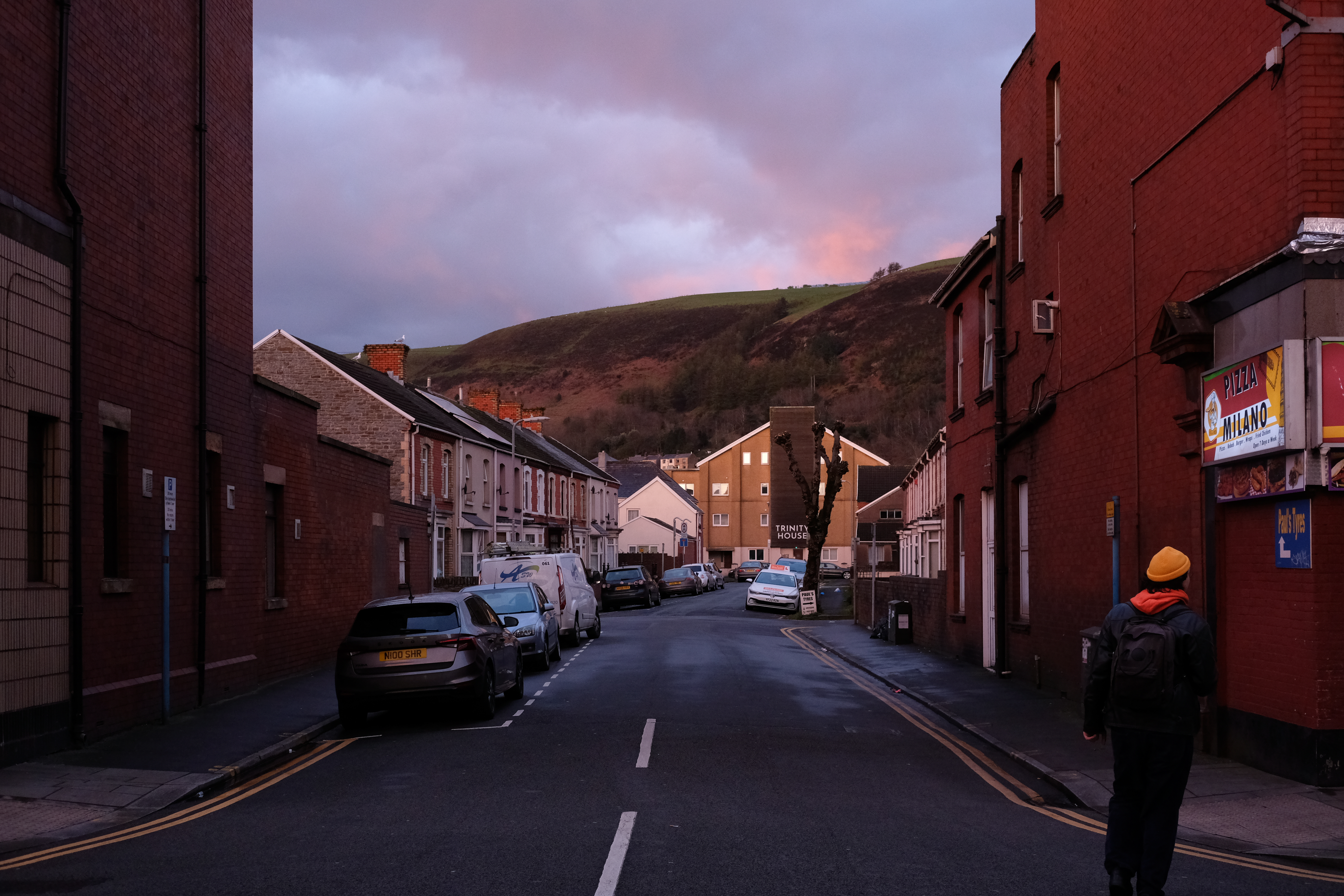
A German-language version of this text was published in the journal Cargo – Zeitschrift für Film, Medien, Kultur.
Moritz Ege